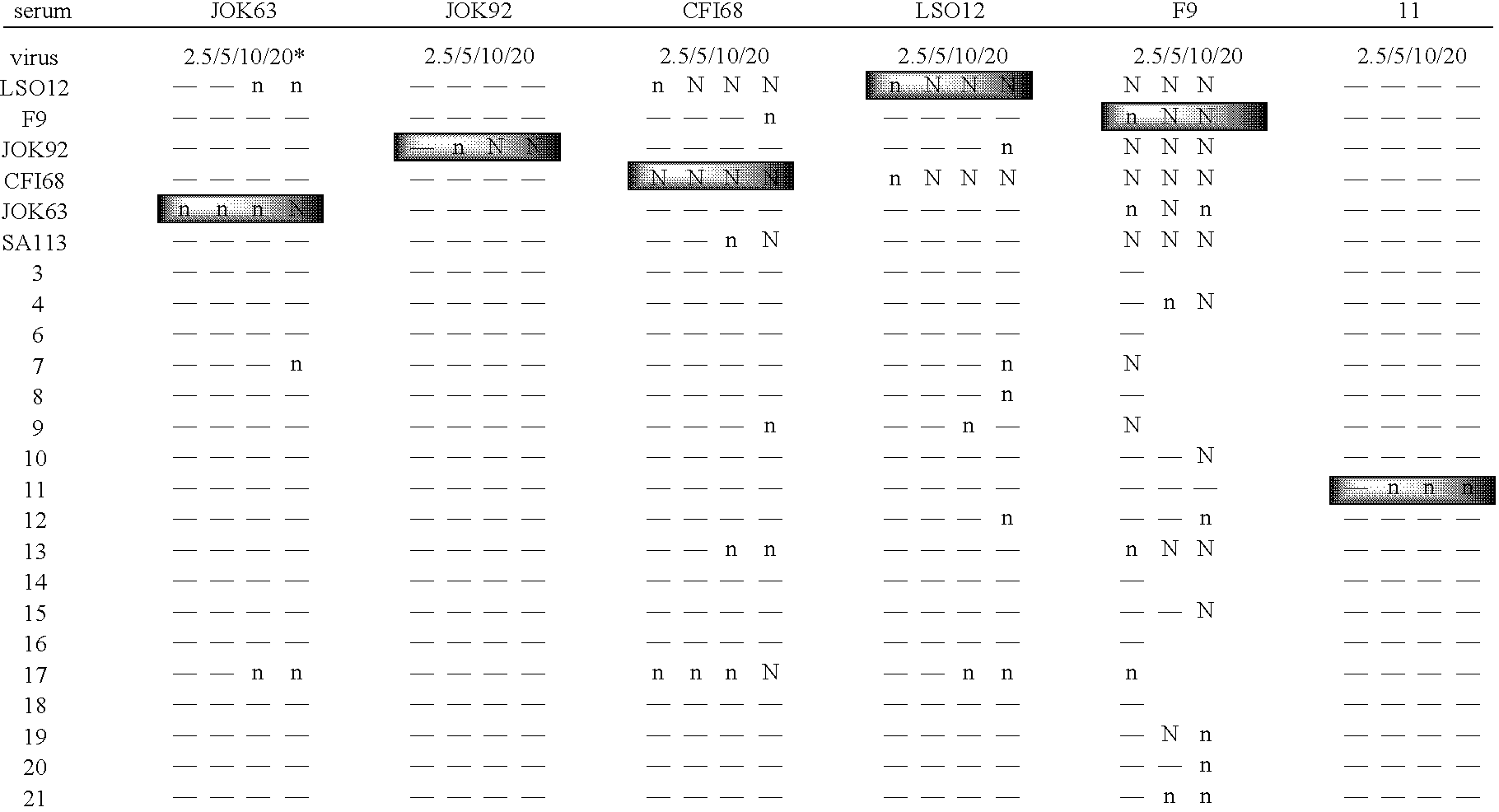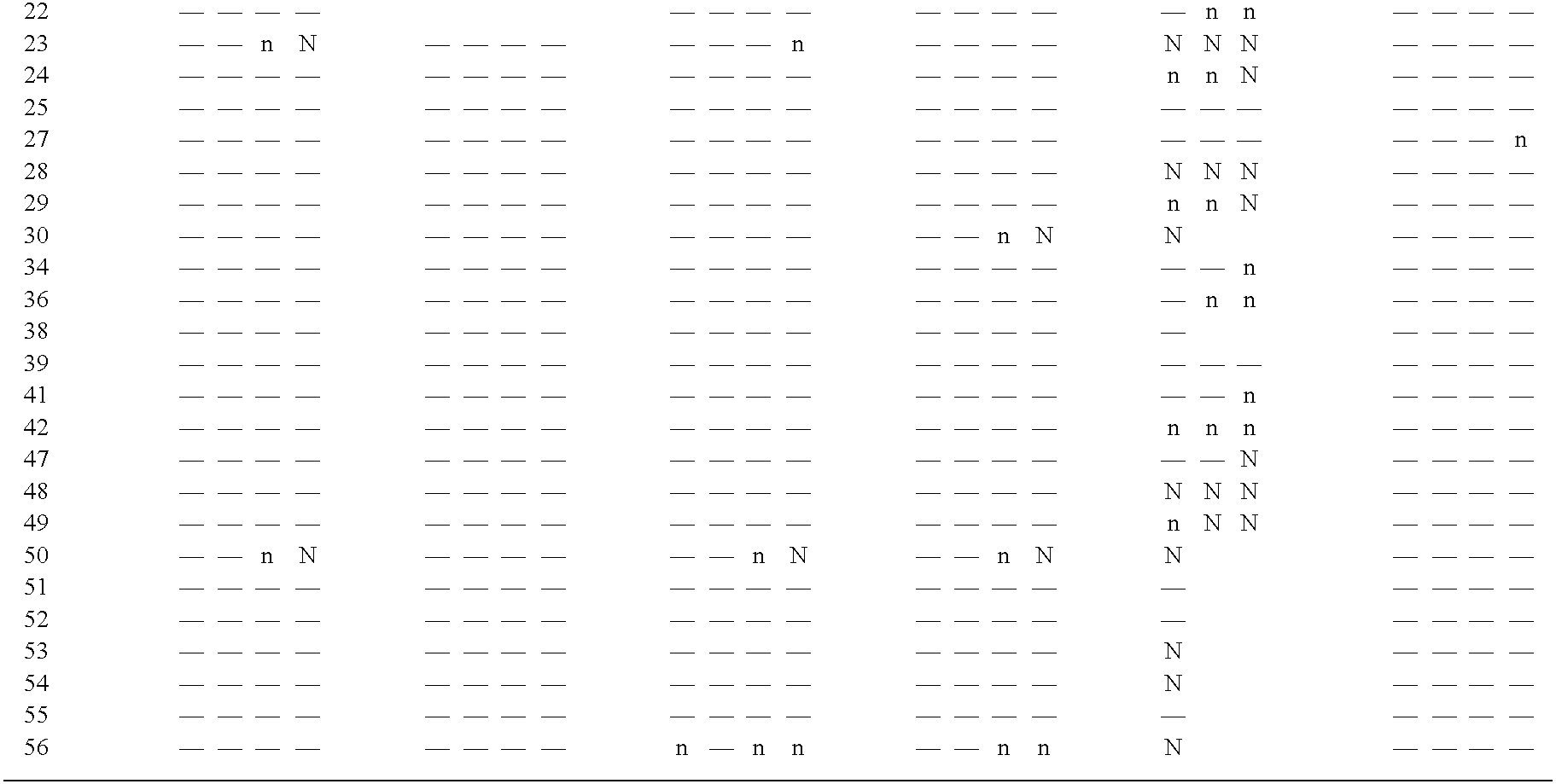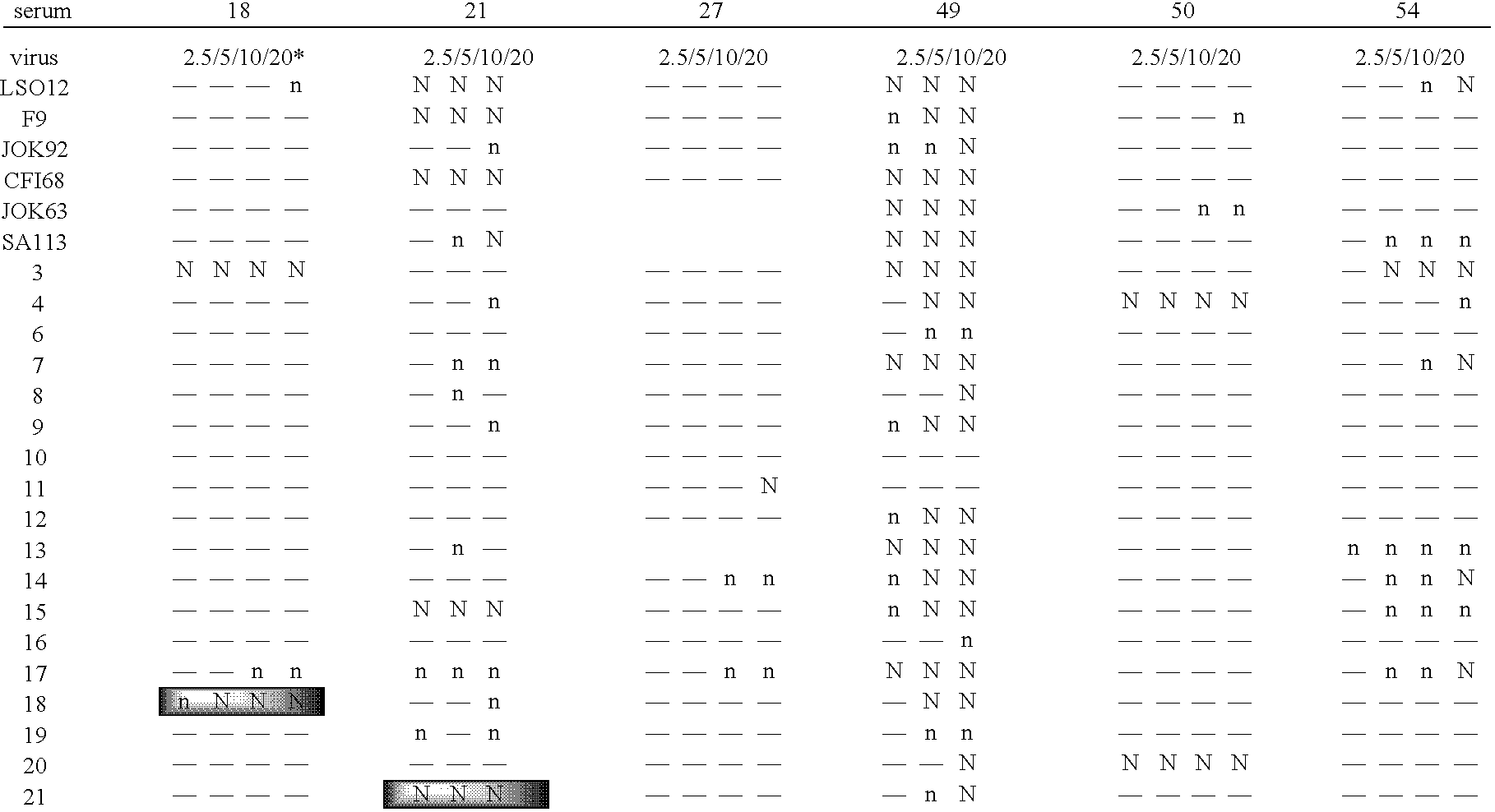Methods of vaccine administration, new feline caliciviruses, and treatments for immunizing animals against feline paraovirus and feline herpes virus
a technology of feline paraovirus and vaccine, which is applied in the field of vaccine administration, can solve the problems of complex treatment and recovery, insufficient immunity of vaccines derived from the fcv-f9 strain, and not true that these vaccines prevent infection from all strains
- Summary
- Abstract
- Description
- Claims
- Application Information
AI Technical Summary
Benefits of technology
Problems solved by technology
Method used
Image
Examples
example 1-1
Isolation and Growth of FCV-21
[0122]Feline calicivirus (FCV) strain 21 (FCV-21) was collected in June of 1993 from an Ann Arbor, Mich. cat show. It was diluted in 96 well micro-tubes containing 1% media and 1:10 dilutions were made. 100 ul of the diluted sample was added to 100 ul of CRFK cells in a 96 well plate.
[0123]The FCV-21 virus was purified three times by limited dilution in 96 well plates. The viral supernatant from the final purification was removed and used to infect CRFK cells grown to 75% confluence in a T25 flask. When 100% CPE was observed, the suspension was freeze / thawed three times and aliquoted into freezing vials (1 ml / vial). The titer of this viral stock was determined to be 1.5×108 TCID50 / ml.
[0124]FCV-21 was deposited on Feb. 1, 2006 with the American Type Culture Collection (ATCC), 10801 University Blvd., Manassas, Va., 20110, USA, and assigned ATCC accession number PTA-7346.
example 1-2
Immunofluorescence and ELISA of FCV-21 Using Various Commercial or Pre-Existing Monoclonal Antibodies
[0125]For the immunofluorescense assay (IFA), a viral stock of FCV-21 was used to infect a 24-well plate seeded with NLFK cells grown to approximately 90% confluency. At approximately 20 hours post infection, the plate was washed twice with 1×PBS, and fixed with 80% acetone. Various monoclonal antibodies were diluted to about 2 ug / ul and added to individual wells of the plate (0.2 ml / well). After a 1 hr incubation at room temperature (RT) with agitation, each well was washed twice with 1×PBS, and secondary antibody (anti-mouse FITC, 10 ug / ml) was added. After covering the plate with aluminum foil and incubating for 30 min at RT with agitation, each well was washed twice with 1×PBS, and air dried. Each well was then observed under a fluorescence microscope for its intensity of staining with FITC.
[0126]For the ELISA assay, a 96-well ELISA plate was coated with 200 ul of an anti-FCV rab...
example 1-3
Capsid Sequence Analysis of FCV-21
[0129]Total RNA was isolated from the supernatant of a FCV-21-infected cell culture using TRIzol reagent (Invitrogen; Carlsbad, Calif.). A “first strand” cDNA preparation was synthesized using random primers and Superscript II reverse transcriptase (Invitrogen). The PCR reaction was performed using the XL rTth polymerase (Applied Biosystems; Foster City, Calif.) and oligonucleotide primers DEL-653 (SEQ ID NO. 1) and DEL-651 (SEQ ID NO. 2). The resulting PCR product was sequenced using BigDye chemistry and an ABI377 Genetic Analyzer. The complete capsid sequence is listed as SEQ ID NO. 12 for nucleotide sequence and SEQ ID NO. 13 for encoded amino acid sequence.
PUM
| Property | Measurement | Unit |
|---|---|---|
| time | aaaaa | aaaaa |
| time | aaaaa | aaaaa |
| time | aaaaa | aaaaa |
Abstract
Description
Claims
Application Information
 Login to View More
Login to View More - R&D
- Intellectual Property
- Life Sciences
- Materials
- Tech Scout
- Unparalleled Data Quality
- Higher Quality Content
- 60% Fewer Hallucinations
Browse by: Latest US Patents, China's latest patents, Technical Efficacy Thesaurus, Application Domain, Technology Topic, Popular Technical Reports.
© 2025 PatSnap. All rights reserved.Legal|Privacy policy|Modern Slavery Act Transparency Statement|Sitemap|About US| Contact US: help@patsnap.com



